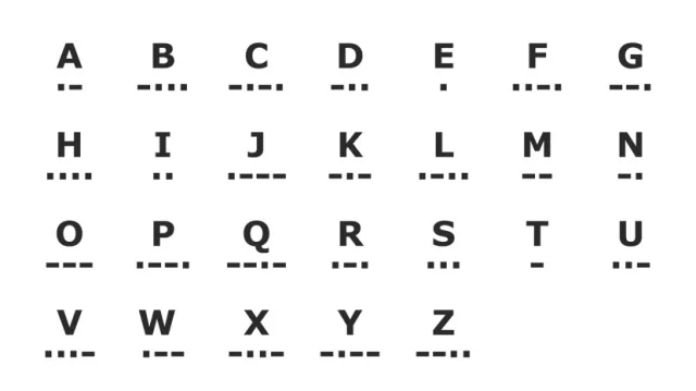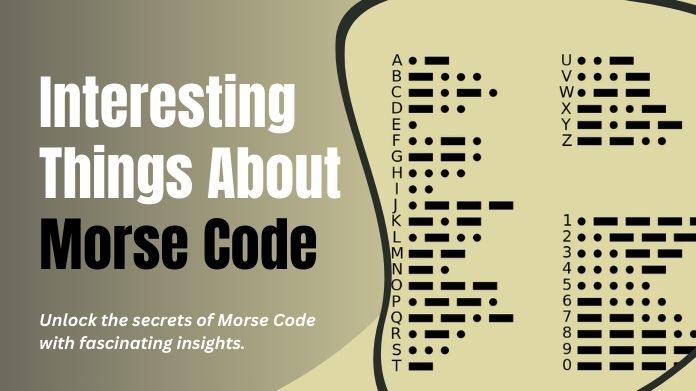Morse Code, a communication system developed in the early 1830s by Samuel Morse and Alfred Vail, revolutionized long-distance communication.
This simple yet ingenious encoding method uses a series of dots and dashes to represent letters and numbers, allowing information to be transmitted through telegraphy, radio, and even visual signals.
In this Morse Code Translator exploration, we will uncover three essential aspects of Morse Code that shed light on its historical significance, its enduring relevance in modern times, and the fundamental principles behind its ingenious encoding system.
Whether you’re a communication enthusiast or simply curious about the evolution of language, delving into these three key aspects will deepen your understanding of Morse Code and its lasting impact on the world of communication.
What is Morse Code?

Morse Code is a method of communication that uses a series of dots and dashes to represent letters, numbers, and other characters. Samuel Morse and Alfred Vail developed it in the 1830s and 1840s for use with telegraph systems.
Each letter and number in Morse Code represents a unique combination of short signals (dots) and longer signals (dashes). The code can be transmitted through various means, including sound, light, and radio waves.
Morse Code was widely used for long-distance communication until the advent of more advanced technologies. However, it is still used today in specific contexts, such as amateur radio and military applications.
Things You Should Know About Morse Code

Here are three essential things you should know about Morse Code:
1. Morse Code is a Method of Communication
Morse Code is a system of transmitting messages using a series of dots and dashes. Samuel Morse and Alfred Vail developed it in the 1830s and 1840s. A unique combination of dots and dashes represents each letter of the alphabet and every number.
2. Morse Code Was Widely Used in Telegraph Systems
In the early days of telegraphy, Morse Code was the primary means of transmitting messages over long distances.
Operators would send and receive messages by tapping the dots and dashes on a telegraph key. Morse Code allowed efficient and relatively fast communication, especially over long distances.
3. Morse Code is Still Used Today
While it may not be as widely used as it once was, Morse Code is still relevant and has its place in modern communication. It is commonly used in amateur radio, aviation, and military applications.
Morse Code can be transmitted via light signals, sound signals, or computer software. Learning Morse Code can be a fun and valuable skill for anyone interested in communication or amateur radio.
4. Morse Code Saved Hundreds on the Titanic!
We all know the tragic tale of the Titanic. The heroic rescue of 700 passengers from the royal ship on April 14th, 1912, was made possible due to wireless telegraph technology and Morse code. The Titanic was equipped with the best wireless technology manufactured by the Marconi Company.
On the fatal night of April 14th, the Titanic slammed into an iceberg in calm seas. Harold Cottam, the radio operator on the adjacent ship named Cunard liner Carpathia, was still awake and received the first distress signal transmitted by the Titanic’s senior radio operator, Jack Phillips.
The Morse code sent was CQD DE MGY, where CQD meant “come quick disaster,” DE stood for “this is,” and MGY was the Titanic’s call sign. When Carpathia received the distress signal from the Titanic, it immediately turned towards its given position, which was 60 miles away.
5. Musicians Have Used Morse Code Too!
You will be surprised to learn that the International Morse Code is not a written language but a sound-based one! Each letter of the code is represented by a combination of short and long sounds known as dots and dashes.
An eighth note is played for each dot or harsh sound, and a quarter note is played for each dash or long sound. Moreover, these are not just two sounds, long and short. Instead, five different sounds, dah, di, dit, did and did it, make up this Morse code.
When you think about it, Morse code is a collection of rhythmic patterns. So, it’s no surprise that Morse code has also impacted the music industry. Yes! Songs by musicians such as the B-52s, Roger Waters, and Kraftwerk have all used Morse code, either as a sound effect or as part of the song’s musical composition.
The songs “Better Days” by Natalia Guiterrez Y Angelo, “London Calling” by Mick Jones, “Strawberry Fields Forever” by the Beatles, and “Radioactivity” by Kraftwerk all feature Morse code.
6. There Are Multiple Morse Codes Today
You would assume there is a universal Morse code. However, that is not the case. Instead, there are two types of Morse codes: the original “American” Morse code and the International Morse code. The American Morse code was developed in the 1830s.
After it was introduced in Europe, it became evident that it lacked codes for letters with markings for different languages and non-English text.
An alternative known as the International Morse code was developed by a gathering of European nations in 1851. The Japanese version, the Wabun code, the SKATS, and the Korean Morse code are all examples of international Morse codes that use the Latin alphabet.
Final Note
In conclusion, Morse Code is a fascinating testament to the ingenuity of human communication. Through our exploration of three key aspects, we’ve uncovered its historical roots, surprising adaptability in modern contexts, and the clever simplicity underlying its encoding system.
As we reflect on Morse Code’s enduring significance, it becomes clear that its legacy extends beyond its initial telegraphic applications. Today, Morse Code persists as both a practical skill for enthusiasts and a symbolic language embodying the evolution of communication technologies.
Morse Code remains a compelling aspect of our linguistic history, Whether used in emergencies, as a niche hobby or as a nostalgic nod to the past.
By understanding and appreciating these exciting facets of Morse Code, we gain insight into its technical intricacies and the broader story of human innovation and the ever-evolving landscape of communication.
